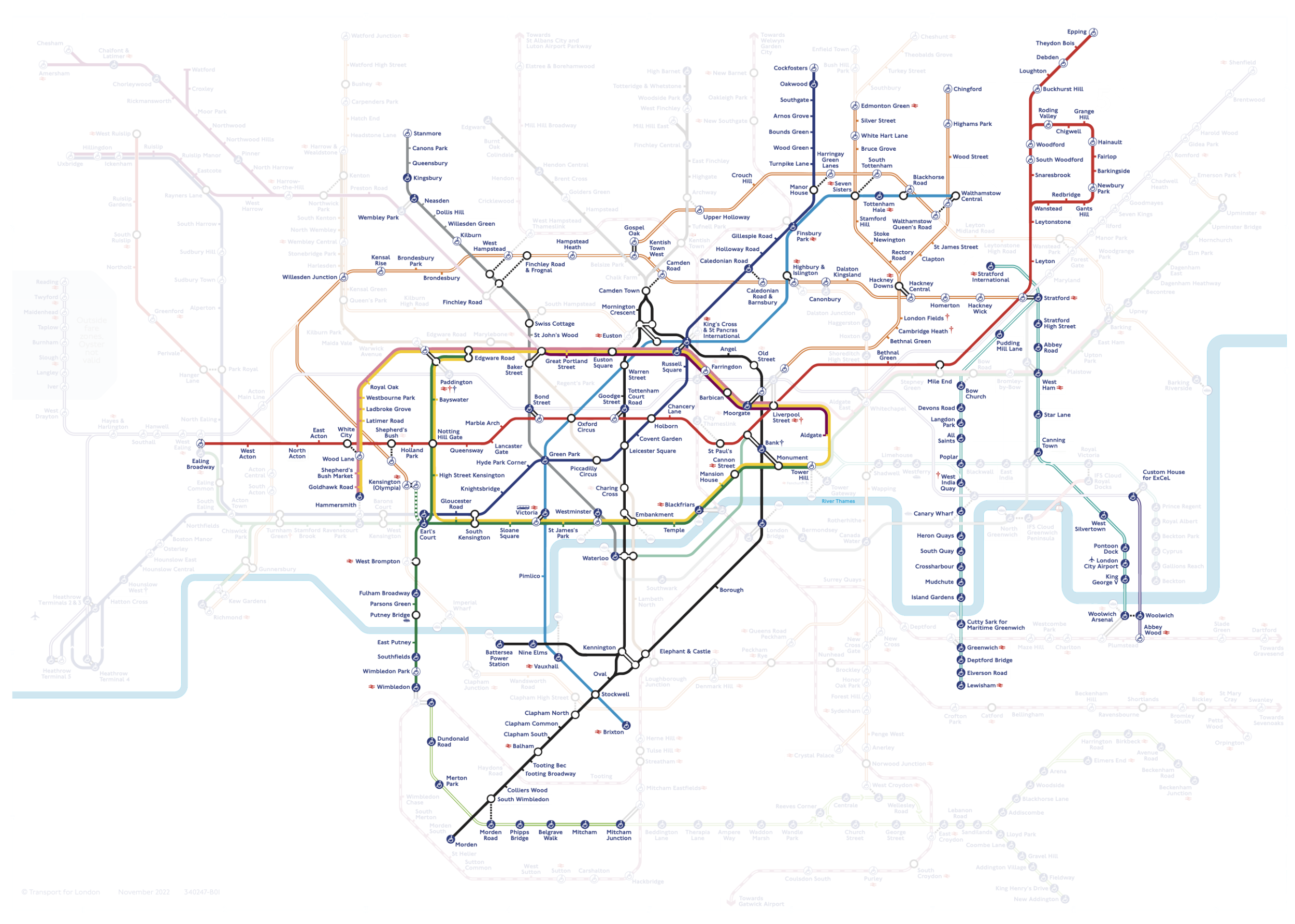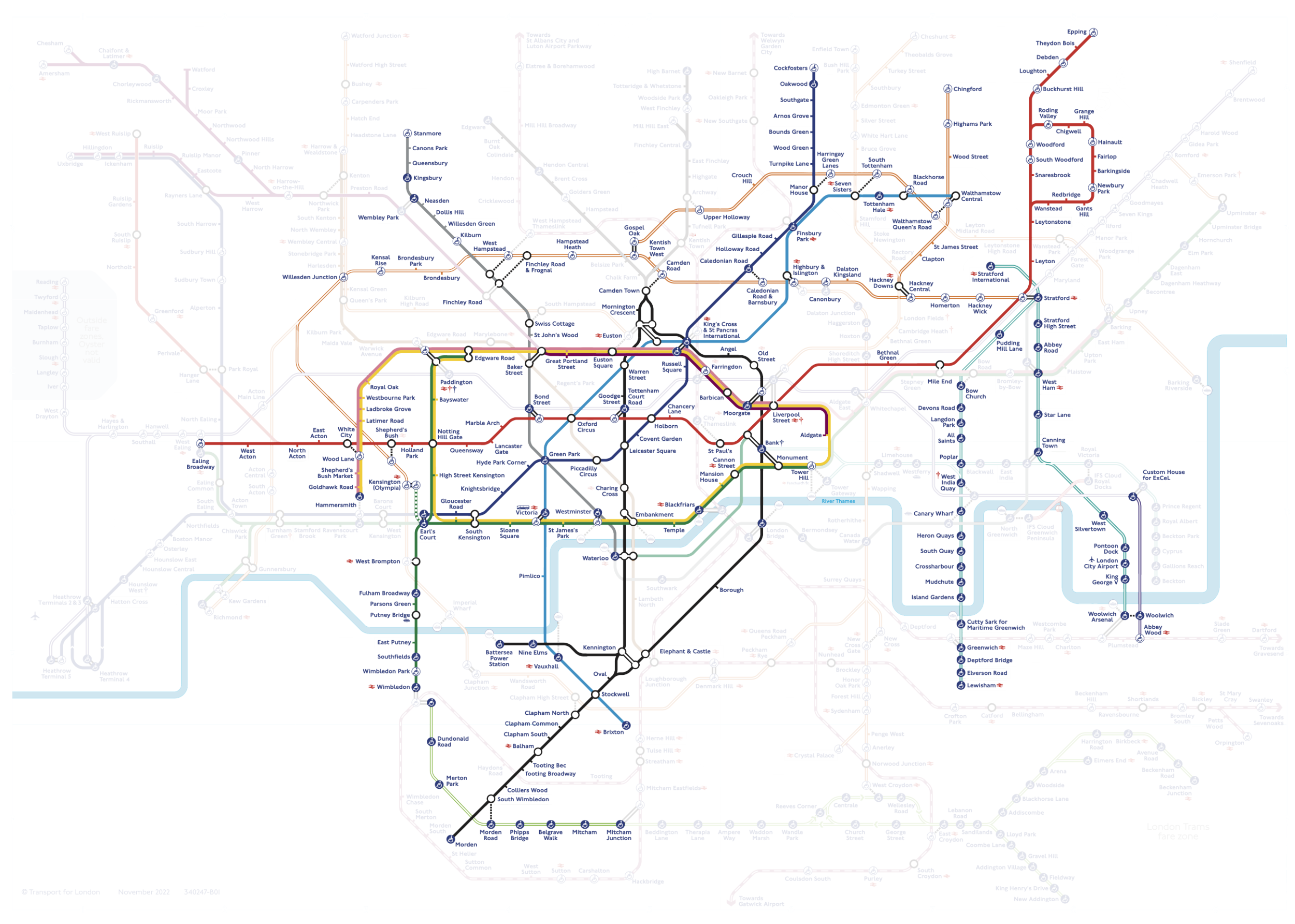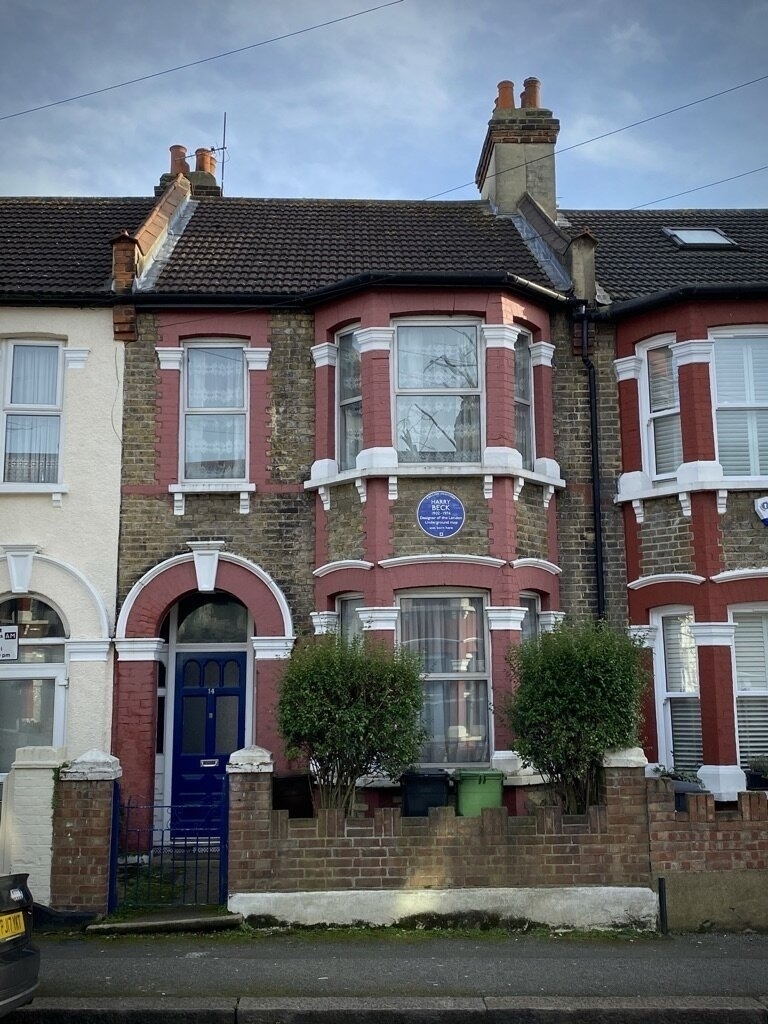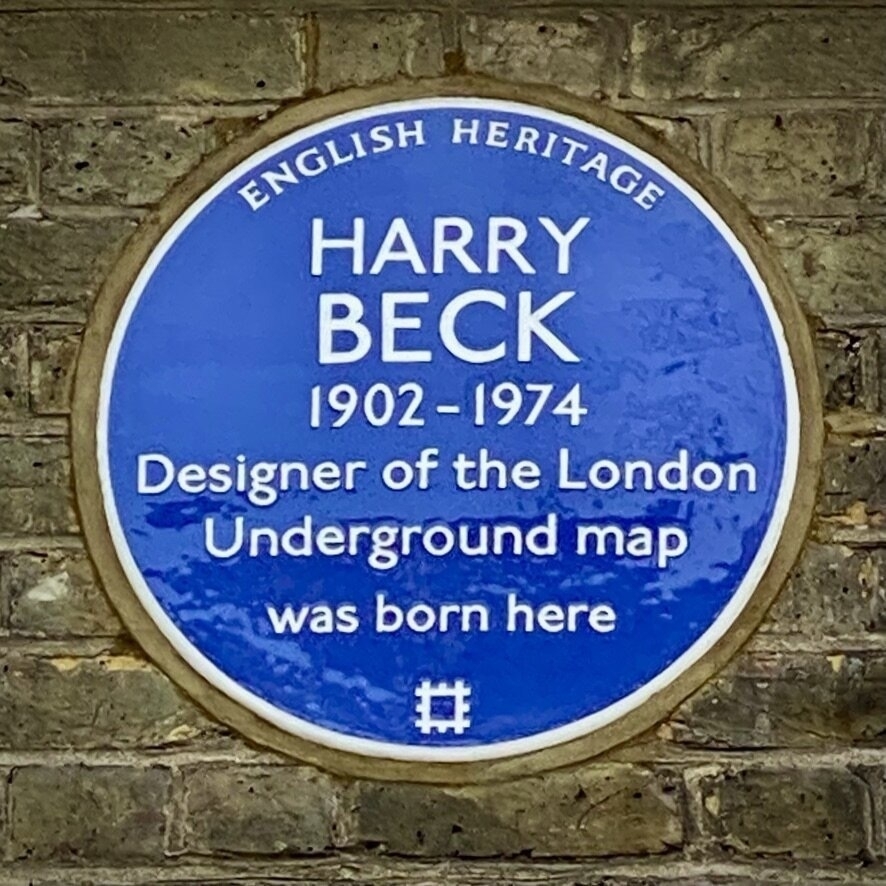-
Walking the TfL map – 28th May
Another TfL map walk today - this time ticking off some stuff in the top right of the map.
Photos
Where I’ve walked

-
Walking the TfL map – 7th May
Central line completed 👣
Photos
Where I’ve walked

-
Walking the TfL map – 1st May
Jubilee line: done ✅
Photos
Where I’ve walked

-
Walking the TfL map – 29th April
Another #WalkTheTube expedition today, this time pushing out into Metroland.
Photos
Where I’ve walked

-
Walking the TfL map – 22nd April
Another #WalkTheTube today - the Hammersmith and City line has now been completed! 💥
(Plus I cleaned up some annoying little bits around the city and east end)
Photos
Where I’ve walked

-
Walking the TfL map – 10th April
A short #WalkTheTube today because the weather was so grim - (Walthamstow to) Edmonton Green to Liverpool Street.
The slideshow and photos are now up.
Photos
Where I’ve walked

-
Walking the TfL map – 7th April
Today’s #WalkTheTube exposition saw me tidy up an annoying little bit of the District line, then fill in some Overground on my way to do the northern end of the Jubilee.
Photos
Where I’ve walked

-
Walking the TfL map – 1st April
Things have definitely slowed on the #WalkTheTube front now that I’ve run out of leave - but I did go out and conquer a new line today.
The Circle line has been completed! POW!
Photos and slideshow are now up.
Photos
Where I’ve walked

-
Walking the TfL map – 20th March
Here’s today’s #WalkTheTube map update.
Photos
Where I’ve walked

-
Walking the TfL map – 19th March
I did a little bit of the Piccadilly line, followed by the Central line out to Ealing Broadway.
Check the links below for photos and slideshows:

-
Walking the TfL map – 14th March
I’ve just updated my #WalkTheTube map with today’s walk, ticking off the southern end of the northern line, a bit of the tram route and District line from Wimbledon to Gloucester Road.
The slideshows of today’s walk are in my #WalkTheTube YouTube playlist
And the photos are in my #WalkTheTube collection on Flickr

-
Going to the Dogs
Further progress on my #WalkTheTube map today - this time colouring in the DLR from Stratford to Lewisham.
🚶♀️🚶🚶♂️📸📷🚇🇬🇧

See the other walks here:
-
Walking the TfL map – 1st March
Some more little bits ticked off today:
Here’s the updated map:

See the other walks here:
-
Walking the TfL map – ‘Dilly dally
I made a start on the Piccadilly line today. See how I got on:
Here’s the updated map:

See the other walks here:
-
Walking the TfL map - The central bit of the Central line
Right, a bit more of the Central line done. The original plan was to go further, but I was shattered.
On the plus side, getting home early meant I could get the video slideshow done and photos uploaded:
Here’s the updated map:

See the other walks here:
-
Walking the TfL map update - 9 February
I made some progress on 3 lines today.
First up was a walk to Hackney Central and then on to Stratford.
- YouTube slideshow: (Walthamstow to) Hackney Central to Stratford
- Flickr gallery: (Walthamstow to) Hackney Central to Stratford
Then a little wriggle to Stratford International station where I followed the DLR.
- YouTube slideshow: DLR from Stratford International
- Flickr gallery: DLR from Stratford International
After that, a walk to Abbey Wood where I made a start on the Elizabeth line.
- YouTube slideshow: Making a start on the Elizabeth line
- Flickr gallery: Making a start on the Elizabeth line
Here’s what the map is looking like now:

-
Walthamstow Central to Chingford
This was one of the shorter walks so far, going from Walthamstow Central, to Wood Street, Highams Park and on to Chingford and then back to ‘Stow.
The updated map:

-
Walking the tube update
An update on my walks along the route of the tube. The map below shows what I’ve covered so far.
Rather dauntingly, it also shows all the bits I haven’t walked yet.

Some of the map will be completely impractical to do (for example, unless you go way out of your way, it’s difficult to cross the eastern end of the Thames on foot), but I want to see how much I can cover before I get bored or my legs fall off.
2 February update: I made a start on the London Overground today. First Walthamstow Queens Road to Gospel Oak on the Goblin line, then Gospel Oak round to Hackney Central. After that, I flipped over to Hackney Downs and back to Walthamstow Central.
- The Goblin line from Walthamstow Queens Road to Gospel Oak photos
- The Goblin line from Walthamstow Queens Road to Gospel Oak slideshow on YouTube
- The Overground from Gospel Oak to Hackney Central photos
- The Overground from Gospel Oak to Hackney Central slideshow on YouTube
- The Overground from Hackney Downs to Walthamstow Central photos
- The Overground from Hackney Downs to Walthamstow Central slideshow on YouTube
- Central line from Woodford to Epping photos
- Central line from Woodford to Epping slideshow on YouTube
-
What Harry can teach us about content design
This post has been copied over from my old site. It was originally dated 21 February, 2021
Our team at work run small challenges to help us get to know more about our lives beyond the office.
This month’s challenge has been to take a photo of something interesting or unusual in our local area.
I realised that the one of the places I wanted to photograph has a story that helps explain what I do as a content designer.
This is the photo I took:

You can tell that a person who lived in this house did something significant because of the conspicuous blue plaque.
But before we get to that, some background.
In the 1800s, Britain was obsessed with railways. New lines were being proposed all over the country, and companies were being created to build and manage them. Fortunes were being made and lost.
To show off their new lines, railway companies designed maps.
These maps weren’t made to help passengers. They were there to show how powerful and important the railway companies were, and how their tendrils spread all over the nation.

Good luck to anyone trying to use the Great Central Railway’s map to find their way from York to Manchester.
A content designer would say that these old maps were built around organisational needs, not user needs.
Harry Beck, who worked drawing electrical schematics for the company that was to become London Underground, saw things differently.
He recognised that what people really wanted was to know how to get to their destination. They didn’t care about the physical route of the railway lines, nor did they care about the exact geography. It’s the lines and the interchanges that are important.
Unlike the railway companies, Harry was thinking about the needs of the user, not the organisation.
In his own time, he drafted a diagram of the Underground as he would an electrical schematic. Lines were horizontal, vertical, or at a 45 degree angle. Stations in congested central London were spaced out, and stations further out were brought closer together. The only geographical feature in his design was the Thames.
In 1932, he presented his design to management at London Underground.

Unsurprisingly, management didn’t receive the new design well. They were used to the old way of doing things. The company rejected Harry’s design, but Harry pushed and pushed, confident that his vision was correct.Eventually, possibly just to stop the noise, management relented, and agreed to make a test print of just 500 copies.

These were such a success that a year later, London Underground produced 700,000 copies. It was so popular that a reprint was needed after just one month, and Harry’s map has been in print ever since. It has grown to be an icon of London and the inspiration for transport maps all over the world.
There’s a mosaic of a London Overground roundel on the station at the end of Harry’s road. The mosaic includes Harry’s name and a small snippet of his map.

Harry lived in a different time. He would never even have heard of content design. But, by guiding people through a complex system, and helping them – in Harry’s case, literally – get to where they needed to go, he did something that would be very recognisable to content designers today.
When you see a tube map now, it looks obvious and simple. But it took 100 years and one special person to move us away from maps built around organisational needs to ones built around the needs of users.
One of the Government Digital Service’s design principles is to ‘do the hard work to make things simple’. It’s difficult to think of a better example of that than Harry and his map.